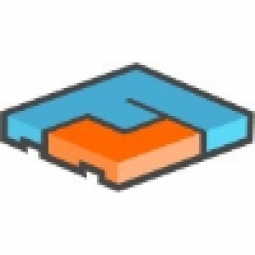Applicable Industries
- E-Commerce
- Retail
Applicable Functions
- Logistics & Transportation
Use Cases
- Retail Store Automation
- Time Sensitive Networking
About The Customer
Allan Store Fixtures is a business based in the suburbs of Dallas, selling a wide range of large equipment for use in retail stores. Their product range includes everything from display cases to checkout counters to mannequins. The business deals with large equipment, making shipping a significant aspect of their operations. The owner, Mamoon Allan, is always looking for ways to streamline processes and improve efficiency, particularly when it comes to managing freight costs. He understands the importance of having accurate and readily available freight costs to the success of his business.
The Challenge
Allan Store Fixtures, a Dallas-based business selling large retail store equipment, faced significant challenges in managing freight costs. The owner, Mamoon Allan, recognized that having accurate and readily available freight costs was crucial to the success of his business. The large size of the equipment he dealt with meant that shipping could be expensive, and discrepancies in freight costs often delayed his ability to set prices for customers or even ruined his profit margin entirely. The process of gathering price quotes from various local carriers, especially when shipping multiple less-than-truckload (LTL) items, was time-consuming and complex. The lack of a streamlined process for managing freight costs was a significant challenge for Allan Store Fixtures.
The Solution
Freightview, an online tool for managing freight costs, provided the solution to Allan Store Fixtures' challenges. Freightview allowed Allan to gather price quotes from all his local carriers in one place, even when shipping multiple LTL items. Once the shipping information was input, Freightview provided rate comparisons and allowed users to print shipping labels and bills of lading and to schedule pickups. It also generated data to help determine which carriers best served a company’s needs, including statistics about price over time from individual carriers. The integration of Freightview with Allan's e-commerce site was a significant advantage, making it easier for his employees to see exactly what his customers were seeing and to trust that the shipping rates would be accurate.
Operational Impact
Quantitative Benefit

Case Study missing?
Start adding your own!
Register with your work email and create a new case study profile for your business.
Related Case Studies.

Case Study
Improving Production Line Efficiency with Ethernet Micro RTU Controller
Moxa was asked to provide a connectivity solution for one of the world's leading cosmetics companies. This multinational corporation, with retail presence in 130 countries, 23 global braches, and over 66,000 employees, sought to improve the efficiency of their production process by migrating from manual monitoring to an automatic productivity monitoring system. The production line was being monitored by ABB Real-TPI, a factory information system that offers data collection and analysis to improve plant efficiency. Due to software limitations, the customer needed an OPC server and a corresponding I/O solution to collect data from additional sensor devices for the Real-TPI system. The goal is to enable the factory information system to more thoroughly collect data from every corner of the production line. This will improve its ability to measure Overall Equipment Effectiveness (OEE) and translate into increased production efficiencies. System Requirements • Instant status updates while still consuming minimal bandwidth to relieve strain on limited factory networks • Interoperable with ABB Real-TPI • Small form factor appropriate for deployment where space is scarce • Remote software management and configuration to simplify operations

Case Study
Digital Retail Security Solutions
Sennco wanted to help its retail customers increase sales and profits by developing an innovative alarm system as opposed to conventional connected alarms that are permanently tethered to display products. These traditional security systems were cumbersome and intrusive to the customer shopping experience. Additionally, they provided no useful data or analytics.

Case Study
How Sirqul’s IoT Platform is Crafting Carrefour’s New In-Store Experiences
Carrefour Taiwan’s goal is to be completely digital by end of 2018. Out-dated manual methods for analysis and assumptions limited Carrefour’s ability to change the customer experience and were void of real-time decision-making capabilities. Rather than relying solely on sales data, assumptions, and disparate systems, Carrefour Taiwan’s CEO led an initiative to find a connected IoT solution that could give the team the ability to make real-time changes and more informed decisions. Prior to implementing, Carrefour struggled to address their conversion rates and did not have the proper insights into the customer decision-making process nor how to make an immediate impact without losing customer confidence.

Case Study
Ensures Cold Milk in Your Supermarket
As of 2014, AK-Centralen has over 1,500 Danish supermarkets equipped, and utilizes 16 operators, and is open 24 hours a day, 365 days a year. AK-Centralen needed the ability to monitor the cooling alarms from around the country, 24 hours a day, 365 days a year. Each and every time the door to a milk cooler or a freezer does not close properly, an alarm goes off on a computer screen in a control building in southwestern Odense. This type of alarm will go off approximately 140,000 times per year, equating to roughly 400 alarms in a 24-hour period. Should an alarm go off, then there is only a limited amount of time to act before dairy products or frozen pizza must be disposed of, and this type of waste can quickly start to cost a supermarket a great deal of money.

Case Study
Supermarket Energy Savings
The client had previously deployed a one-meter-per-store monitoring program. Given the manner in which energy consumption changes with external temperature, hour of the day, day of week and month of year, a single meter solution lacked the ability to detect the difference between a true problem and a changing store environment. Most importantly, a single meter solution could never identify root cause of energy consumption changes. This approach never reduced the number of truck-rolls or man-hours required to find and resolve issues.








